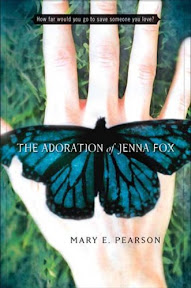I reviewed two very different anthologies in Bookslut last month Starry Rift edited by Jonathan Strahan and Cowboy Stories from Chronicle Books with illustrations from Barry Moser. Here's what I had to say in that review:
In Rift, Strahan has collected an excellent array of science fiction and fantasy authors to write for teens. You have some usual suspects here: Neil Gaiman, who uses a list format for “Orange,” a creepy story about sibling rivalry that is also very funny; Kelly Link with a first contact/superflu combination in “The Surfer” that manages to be a decent coming-of-age tale as well, and Cory Doctorow with “Anda’s Game” which is an excellent look at how gaming can be used for bad purposes. I do feel that he falters a bit by trying to make Anda’s struggle also about obesity and diabetes; both the threat of illness and the solution were far too pat and Anda’s attention was always more focused on the game than her health; the story would have been better served by not forcing that message, but it is still a great techno adventure of the type Doctorow excels at.
I liked Scott Westerfield’s colonization story “Ass-Hat Magic Spider” a lot and hope people can enjoy what he is saying here rather than wasting time wondering about a boy who likes Charlotte’s Web. Margo Lanagan said in the brief note for “An Honest Day’s Work” that it was partly inspired by whaling ports, but I kept thinking about Gulliver’s Travels; it’s creepy in the best possible way and classic Lanagan. Finally, Kathleen Ann Goonan’s “Sundiver Day” is a very prescient view of siblings left behind in war; the SF twist is a good one but the emotion is what really comes through. There’s nothing in Goonan’s story that is out of place in 2008, other than the science which if it was here I’m sure some lost little sister somewhere would be trying to use. There are ten other stories in the collection by great writers like Ann Halam, Garth Nix, Ian McDonald and Alastair Reynolds. All in all it’s a wonderful introduction to many authors in the genre and comes highly recommended.
Swinging 180 degrees, Cowboy Stories contains mostly reprints and excerpts although there are a few new stories as well. Barry Moser’s engravings can not be over-praised here; he is a perfect artist for westerns and each of his full-page illustrations elevates the stories they accompany. As for the stories themselves, the classics are well represented starting with a chapter from Shane that would make anyone want to run out and read the book (and please also rent the movie). Larry McMurty is here with Lonesome Dove and there is short story from Louis L’Amour, “The Gift of Cochise.” This one includes a powerful female character and I will confess it was one of my favorites.
A bit of Zane Grey’s Riders of the Purple Sage is here (of course) and also Elmore Leonard’s complete “Three Ten to Yuma” as well as Annie Proulx’s look at range life in “The Blood Bay” and Dorothy M. Johnson’s funny and unexpected outlaw tale (with another excellent female character), “I Woke Up Wicked.” This one made me think of Maverick a bit; it just had that sense of fun, even when things got serious.
There are 21 entries in this collection and as evident from those already mentioned, the range is immense. From Stephen Crane, Max Brand and O. Henry to excerpts of Judy Blunt’s memoir, Breaking Clean and Tom Groneberg’s Secret Life of Cowboys, the publisher has done an excellent job of bringing together a great mix of old and new. Any teen with an interest in Americana, the frontier or classic westerns is going to love this and I hope it finds a wide audience.

















